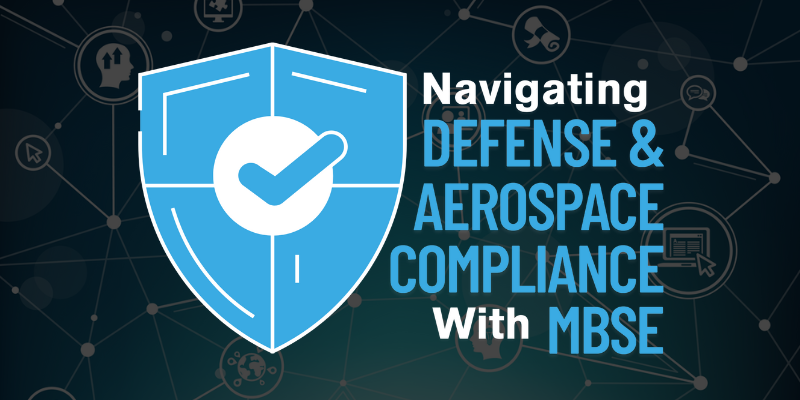Agile vs. Waterfall for Satellites: An MBSE Simulation in Innoslate
Robin Yeman and Yashwant Malaiya recently demonstrated MBSE for Satellite systems using Innoslate as their MBSE tool. They presented their study at...
4 min read
SPEC Innovations Team
:
7/9/25 4:12 PM

Simulation plays a vital role in Model-Based Systems Engineering (MBSE) by allowing engineers to test, validate, and refine system models before physical implementation. In the age of digital engineering, simulation bridges the gap between abstract system design and real-world behavior. It reduces rework, speeds up development, and supports better decision-making throughout the lifecycle. This article explores how simulation fits into the MBSE process, the tools and techniques used, and how organizations can use it to drive innovation.
In MBSE, simulation refers to the dynamic execution of system models to understand their behavior under different conditions. These models often include logical, physical, and functional representations.
Behavioral Simulation: Tests logical flows and control sequences (e.g., SysML Activity Diagrams).
Discrete Event Simulation (DES): Models system performance over time based on events.
Monte Carlo Simulation: Assesses risk and uncertainty using probability distributions.
Digital Twin Simulation: Real-time synchronization of a virtual system with its physical counterpart.
Innoslate is capable of all four simulation types. Through its built-in simulators, it can simulate system and process behavior, time, cost, resource allocation, and variance. Using integrations such as MATLAB and STK, users can develop a digital twin.
📖Learn More: Integrate Innoslate with STK and MATLAB for Co-Simulation

Validates Requirements Early: Simulations can uncover requirement conflicts or design flaws before they become costly during implementation.
Supports Trade Studies: Quickly test design alternatives using the same system model.
Improves Stakeholder Communication: Visual simulations help non-technical stakeholders understand system behavior.
Reduces Risk: Simulations reduce uncertainty in complex or safety-critical systems.
Simulation is part of the verification and validation phase in the V-lifecycle. It's a low-cost solution that helps you identify bottlenecks and risks early in the lifecycle, before implementation. Learn more about the benefits of testing early: Plan Verification and Validation Early in the Lifecycle.
Functional simulation is a vital testing procedure in several industries.
Sopatra simulates human performance metrics for various industries, including aerospace, defense, automotive, and healthcare.

Start simulations during conceptual design and iterate throughout development.
Early simulation reveals feasibility issues, risks, or performance trade-offs before significant resources are invested, allowing for informed decision-making. It enables proactive decision-making, not reactive fixes.
How to apply it:
Begin with coarse, high-level models to simulate basic system behaviors or interactions.
As the system design matures, progressively increase model detail to explore more precise dynamics.
Embed simulation checkpoints into your development timeline (e.g., post-requirements, pre-design review, pre-integration).
Reuse and refine models as you move from architecture to component-level validation.
Ensure simulation scenarios directly trace back to system requirements.
Simulations must validate what the system must do, not just what it can do. Traceability ensures stakeholder needs are verified and that simulations serve a purpose beyond demonstration.
How to apply it:
Use requirement traceability tools (like Innoslate’s Requirements View) to link each simulation input/output to specific system-level requirements.
Define simulation scenarios directly from use cases or operational concepts (CONOPS).
Establish pass/fail criteria for simulations tied to key performance indicators (KPIs) or thresholds defined in requirements.
Use model-based verification matrices to prove coverage and completeness.
Avoid overengineering. Try to match model complexity to the decision at hand.
Overly complex models consume time, are hard to validate, and can delay decisions. Simplicity enables agility and stakeholder engagement.
How to apply it:
For early-phase trade studies, use simplified behavioral or functional models (e.g., activity diagrams, block definitions).
Apply higher fidelity only where critical, such as mission-critical subsystems or safety verification.
Conduct a “fidelity needs analysis” by asking: What decision is this model supporting? What is the risk of inaccuracy?
Consider surrogate modeling or reduced-order models when computational load is high but trends are what matter.
Use parametric simulations or digital threads to streamline testing.
Manual execution of simulations is slow, error-prone, and limits scalability. Automation supports continuous integration and model reuse.
How to apply it:
Use parameter sweeps or Monte Carlo simulations to test performance across design spaces.
Integrate simulation tools with your MBSE platform using APIs, co-simulation frameworks, or digital engineering environments.
Establish a digital thread linking system models, simulation tools, and data repositories to support traceability and automatic updates.
Build simulation scripts or workflows that can run in CI/CD-style pipelines to test changes with every iteration.
Simulation isn’t just an add-on to MBSE; it’s a core enabler of digital transformation. As systems become increasingly complex and software-defined, the ability to test virtually through digital engineering becomes a significant competitive advantage. Simulation reduces risk, supports innovation, and brings models to life, making MBSE not just a process, but a proving ground for innovation. Get a free account of Innoslate to start integrating simulation into your workflows.
Want to learn how to perform 21st-century systems engineering faster, better, and cheaper?
Real MBSE is more than just building models. It’s about transforming how systems are engineered using the Lifecycle Modeling Language (LML) and the powerful software Innoslate. This book shows you how to optimize across disciplines, cost, and schedule—without compromising performance.
Through practical examples and proven methodology, you’ll learn how to:
Enable parallel development with real-time collaboration
Link information seamlessly to create powerful system abstractions
Execute systems engineering activities with greater speed and agility
Apply a methodology that integrates techniques, processes, and tools
Whether you're new to MBSE or refining an existing approach, this book bridges the gap between traditional methods and the demands of today’s digital engineering era. Stop modeling like it’s the 1960s—start engineering for the future.
Have questions about model-based systems engineering or requirements management? Talk to an expert and see how Innoslate can streamline your projects from start to finish.

Robin Yeman and Yashwant Malaiya recently demonstrated MBSE for Satellite systems using Innoslate as their MBSE tool. They presented their study at...
%20(200%20%C3%97%20100%20px)%20(800%20%C3%97%20400%20px)%20(7).png)
In systems engineering, many practitioners never create a behavior model. They work with requirements, develop plans, perform risk analyses, etc....

Not up for the read? Watch the recording of the webinar!